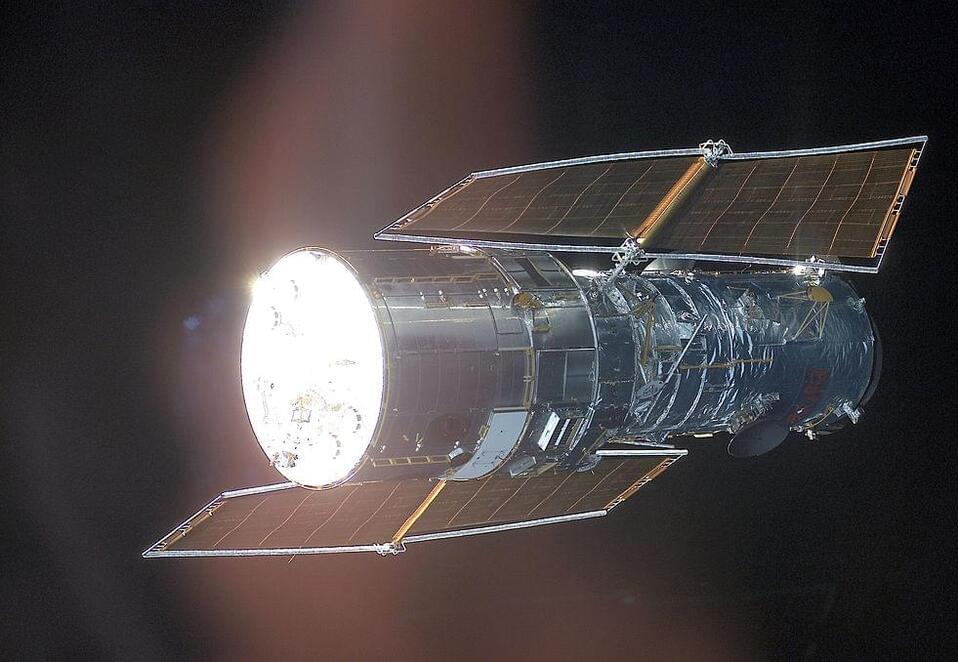Feb 2, 2022
MSI Re-Enables AVX-512 Support on Alder Lake CPUs
Posted by Shubham Ghosh Roy in category: computing
MSI’s latest firmware for Intel Z690 platforms re-enables AVX-512 support on 12th Gen Core processors.
MSI’s latest firmware for Intel Z690 platforms re-enables AVX-512 support on 12th Gen Core processors.
DaVinci penned the aerial screw design in the 1400s, way before air travel was a thing. Now, it’s being put to action with this student-built drone.
Drones aren’t anything new —multi-rotor aircraft are becoming a bigger part of people’s lives every day. From the latest batch of up-and-coming urban air mobility companies to hobby applications, electric aircraft with four or more motors are commonplace, and generally, they use conventional multi-bladed propellers to keep themselves aloft. That’s not what’s going on with this particular drone developed by engineering students at the University of Maryland, though.
Assembled for a student design competition hosted by the Vertical Flight Society, it’s a mixture of old and new. With rotors reminiscent of Leonardo DaVinci’s aerial screw illustrations from the late 1490s, it flies like any other drone would, all while looking extremely bizarre and having interesting flight characteristics.
Continue reading “DaVinci-Style Drone With 600-Year-Old Screw Rotor Design Actually Flies” »
WASHINGTON, Feb 1 (Reuters) — Tesla Inc (TSLA.O) will recall 53,822 U.S. vehicles with the company’s Full Self-Driving (Beta) software that may allow some models to conduct “rolling stops” and not come to a complete stop at some intersections posing a safety risk.
The National Highway Traffic Safety Administration (NHTSA) said the recall covers some 2016–2022 Model S and Model X, 2017–2022 Model 3, and 2020–2022 Model Y vehicles. NHTSA said the feature also known as FSD Beta may allow vehicles to travel through an all-way stop intersection without first coming to a stop.
Tesla will perform an over-the-air software update that disables the “rolling stop” functionality, NHTSA said. The agency added it “maintains regular discussions with all manufacturers to discuss potential safety concerns of these types of systems.”

In addition to the beautiful reddish image seen by the telescope, ESA stated that the data gathered from this sort of observation could aid in deciphering riddles surrounding the Universe’s beginning.
About Hubble Space Telescope
The Red planet was still getting bombarded after 4.48 billion years.
It is believed to be the second oldest meteorite discovered, about two billion years old, and contains the most water found in any of Mars’ fallen rocks.
Previous studies of Black Beauty have shown that the meteorite lacked signatures of shock deformation, which led scientists to believe that Mars stopped experiencing heavy bombardment from flying space rocks about 4.48 billion years ago. This also suggested that the planet could have developed habitable conditions early on in its history.
Continue reading “Mars meteorite upends when we think life could have began” »
Phase I trial aims to build on response seen in proof-of-concept trial.
NEW YORK AND CAMBRIDGE, MASS. — JANUARY 27, 2022 — IAVI and biotechnology company Moderna announced today that first doses have been administered in a clinical trial of experimental HIV vaccine antigens at George Washington University (GWU) School of Medicine and Health Sciences in Washington, D.C. The Phase I trial, IAVI G002, is designed to test the hypothesis that sequential administration of priming and boosting HIV immunogens delivered by messenger RNA (mRNA) can induce specific classes of B-cell responses and guide their early maturation toward broadly neutralizing antibody (bnAb) development. The induction of bnAbs is widely considered to be a goal of HIV vaccination, and this is the first step in that process. The immunogens being tested in IAVI G002 were developed by scientific teams at IAVI and Scripps Research and will be delivered via Moderna’s mRNA technology.
IAVI and Moderna and do not necessarily reflect the views of USAID or the United States government.

Our eyes are continuously bombarded by an enormous amount of visual information – millions of shapes, colors, and ever-changing motion all around us.
For the brain, this is no easy feat.
For 15 years, scientists have been baffled by the mysterious way water flows through the tiny passages of carbon nanotubes—pipes with walls that can be just one atom thick. The streams have confounded all theories of fluid dynamics; paradoxically, fluid passes more easily through narrower nanotubes, and in all nanotubes it moves with almost no friction. What friction there is has also defied explanation.
In an unprecedented mashup of fluid dynamics and quantum mechanics, researchers report in a new theoretical study published February 2 in Nature that they finally have an answer: ‘quantum friction.’
The proposed explanation is the first indication of quantum effects at the boundary of a solid and a liquid, says study lead author Nikita Kavokine, a research fellow at the Flatiron Institute’s Center for Computational Quantum Physics (CCQ) in New York City.
After simulating 10 contests, with more than 5,000 participants, AlphaCode has ranks in the top 54%.
